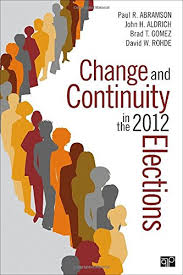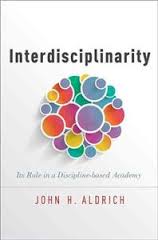Tianjian Shi shows how cultural norms affect political attitudes and behavior through two causal pathways, one at the individual level and one at the community level. Focusing on two key norms – definition of self-interest and orientation to authority – he tests the theory with multiple surveys conducted in mainland China and Taiwan. Shi employs multi-level statistical analysis to show how, in these two very different political systems, similar norms exert similar kinds of influence on political trust, understanding of democracy, forms of political participation, and tolerance for protest. The approach helps to explain the resilience of authoritarian politics in China and the dissatisfaction of many Taiwan residents with democratic institutions. Aiming to place the study of political culture on a new theoretical and methodological foundation, Shi argues that a truly comparative social science must understand how culturally embedded norms influence decision making.
Citation: Shi, Tianjian. The Cultural Logic of Politics in Mainland China and Taiwan. Cambridge University Press, 2014.
 Since its first edition in 1980, Change and Continuity has been known for offering the best analysis and explanation of voting behavior in the most recent US elections while setting those results in the context of larger trends and patterns in elections studies. Adopters appreciate how this top-notch author team meticulously explains to undergraduates the import and impact of their analysis of the NES data. The 2012 edition, with its current scholarship and its excellent use and display of data, covers the most recent presidential and Congressional elections, voter turnout, and the social forces, party loyalties, and prominent issues that affect voting behavior.
Since its first edition in 1980, Change and Continuity has been known for offering the best analysis and explanation of voting behavior in the most recent US elections while setting those results in the context of larger trends and patterns in elections studies. Adopters appreciate how this top-notch author team meticulously explains to undergraduates the import and impact of their analysis of the NES data. The 2012 edition, with its current scholarship and its excellent use and display of data, covers the most recent presidential and Congressional elections, voter turnout, and the social forces, party loyalties, and prominent issues that affect voting behavior.
As with all books in the Change and Continuity series, the authors present election data in a straightforward, accessible manner with an array of thorough, yet student-friendly graphics.
 At the turn of the twentieth century, colleges and universities in the U.S. and elsewhere were convulsed with change, a change induced by the creation of the modern set of academic disciplines. Their emergence at that time fundamentally altered how universities were constructed and how they did their business. It is the model on which the academy of the twenty-first century operates. Very shortly after the creation of the disciplinary-based academy, pressures began to build, both in the academy and in the society that looked to the academy to help solve pressing social problems, to develop interdisciplinary approaches to address problems that fit poorly within the disciplinary structure. These external and internal forces never fully abated, and peaked after the Second World War. They have peaked again more recently, and the contemporary college and university is therefore a rich amalgam of disciplinary and interdisciplinary units, problems, approaches, and structures. Interdisciplinarity examines the contemporary academy by connecting its disciplinary-based structure with its burgeoning interdisciplinary focus. Part I looks at the value of the disciplinary structure in the contemporary university alongside the motivations that lead to calls for greater interdisciplinary approaches. Part 2 traces the development of external forces, particularly the private and public foundation, that shaped the development of interdisciplinary scholarship in the twentieth century. The final two sections examine in detail interdisciplinary education and the organization of university-based interdisciplinary research.
At the turn of the twentieth century, colleges and universities in the U.S. and elsewhere were convulsed with change, a change induced by the creation of the modern set of academic disciplines. Their emergence at that time fundamentally altered how universities were constructed and how they did their business. It is the model on which the academy of the twenty-first century operates. Very shortly after the creation of the disciplinary-based academy, pressures began to build, both in the academy and in the society that looked to the academy to help solve pressing social problems, to develop interdisciplinary approaches to address problems that fit poorly within the disciplinary structure. These external and internal forces never fully abated, and peaked after the Second World War. They have peaked again more recently, and the contemporary college and university is therefore a rich amalgam of disciplinary and interdisciplinary units, problems, approaches, and structures. Interdisciplinarity examines the contemporary academy by connecting its disciplinary-based structure with its burgeoning interdisciplinary focus. Part I looks at the value of the disciplinary structure in the contemporary university alongside the motivations that lead to calls for greater interdisciplinary approaches. Part 2 traces the development of external forces, particularly the private and public foundation, that shaped the development of interdisciplinary scholarship in the twentieth century. The final two sections examine in detail interdisciplinary education and the organization of university-based interdisciplinary research.
Since its first appearance fifteen years ago, “Why Parties?” has been essential reading for anyone wishing to understand the nature of American political parties, but in the interim, the party system has undergone some radical changes. In this landmark book, now rewritten for the new millennium, John H. Aldrich goes beyond the clamor of arguments over whether American political parties are in resurgence or decline and undertakes a wholesale reexamination of the foundations of the American party system. Surveying critical episodes in the development of American political parties – from their formation in the 1790s to the Civil War – Aldrich shows how they address three fundamental problems of democracy: how to regulate the number of people seeking public office, how to mobilize voters, and how to achieve and maintain the majorities needed to accomplish goals once in office. Aldrich brings this innovative account up to the present by looking at the profound changes in the character of political parties since World War II, especially in light of ongoing contemporary transformations, including the rise of the Republican Party in the South, and what those changes accomplish, such as the Affordable Care Act. Finally, “Why Parties?” offers a fuller consideration of party systems in general, especially the two-party system in the United States, and explains why it is necessary for effective democracy.
Citation: Aldrich, John H. Why Parties?: A Second Look. University of Chicago Press, 2011.


